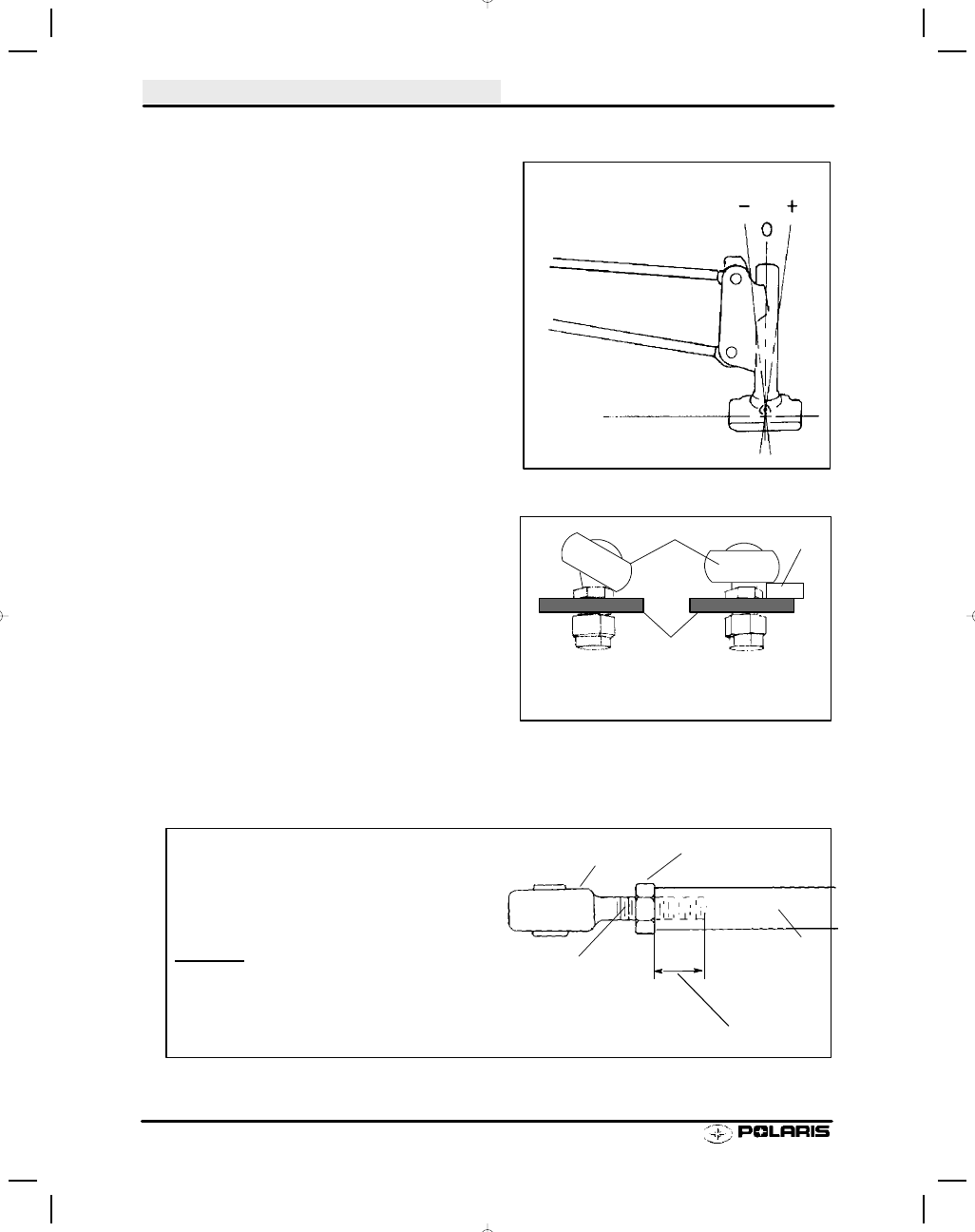Snowmobile Polaris PRO X (2003 year). Instruction - part 56

STEERING / FRONT SUSPENSION
6.12
Camber Definition - All IFS
The following definitions of camber use automotive
terminology to describe positive and negative posi-
tions. Refer to the illustration at right.
S
0 (Neutral) Camber - Spindle is 90
q (perpendicu-
lar) to ground
S
+ (Positive) Camber - Spindle bottom is canted
inward toward chassis
S
-- (Negative) Camber - Spindle bottom is canted
outward from chassis
Radius Rod and Tie Rod End Torque Procedure
Radius rod and tie rod ends must be parallel to their
respective mounting surface after tightening jam nut
as shown at right. Hold tie rod or radius rod and tigh-
ten jam nut. If possible, support the edge of the rod
end as shown to keep it from rotating out of position
until jam nut is tight. When tie rod ends are properly
tightened, the tie rod should rotate freely approxi-
mately 1/8 turn.
Rod End Engagement Guidelines - All IFS
Positive, Negative, and Neutral (0
q) Camber
Front View
Incorrect
Correct
Tie Rod End
Mounting
Surface
Support
Edge
Tie Rod Or
Radius Rod
Thread Engagement
Tie Rod Or Radius Rod End
Tie Rod Or Radius Rod End Must
Engage Rod A Minimum Of 2x Thread
Diameter When Adjustment Is Complete
EXAMPLE
7/16
s Rod End x 2 = 7/8s
Minimum Thread Engagement =7/8
s
11mm x 2 = 22mm
Minimum Thread Engagement =22mm
Jam Nut
Diameter Of Rod
End x 2 = Minimum
Thread Engagement